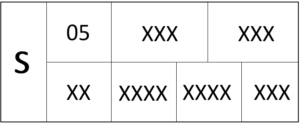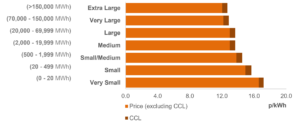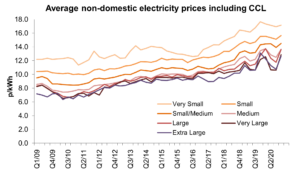Contract Type
In this section, you will find useful information about contract types, know what type of customer you are classified and get insights on how the electricity prices change depending on your electricity consumption.
Navigate through the main topics:
Types of Contracts for Non-domestic Customers
Energy suppliers are changing the way how customers pay for their energy. The contract specific features, terms and conditions are particular for each agreement but basically, there are two main contract types: Fixed or Flexible.
As a non-domestic consumer, it is especially important to know the pros and cons of each contract type and negotiate the best deal for your business.
Fixed Contract
A fixed contract sets a fixed constant electricity price charge that is agreed upfront.
It offers budget certainty, stability and reduces consumers risks associated with electricity price fluctuations and can be contracted a year in advance. Some suppliers could offer commodity and/or non-commodity fixed components.
Although it offers less risk, usually the fixed contracted tariffs are higher than flexible tariffs, this is due to the exposed risk associated with increasing wholesale prices for the supplier that buys in the more volatile wholesale market. Such an agreement also does not allow the consumer to benefit from possible future decreases in electricity prices.
Flexible Contract
A flexible contract offers the possibility to have some tariff elements varying. These components are known as pass-through charges because suppliers pass them directly to their customers’ electricity bill charges. Which tariffs are fixed or variable depends on the agreement reached with the supplier.
Allows the consumer to be more proactive in their energy use and to benefit from smart electricity consumption. Some tariffs can be cheaper than in a fixed contract because the risk is greater on the consumer’s side.
There is greater risk with less budget certainty, requiring more attention for effective energy management. For example, investment energy monitoring and analysis is needed to maximise benefits. This can be seen as more complicated for consumers that lack energy awareness or the resources to enact energy programmes.
What Type of Customer Are You?
Non-domestic consumers are diverse, due to their different range of activities, and energy use. For billing purposes, non-domestic consumers are divided into different profile classes that consider their energy consumption and establish their settlement meter (HH or NHH).
Profile Classes
To know the profile class, customers can check the first two digits of their Meter Point Administration Number (MPAN). The figure below shows a schematic example of an MPAN, in this case, the first two digits of this customer are 05.

The table below summarises the relation of MPAN digits to profile class, customer type and settlement meter.

Non-domestic Electricity Prices Comparisons
The electricity prices vary depending on your electricity consumption. The figure below shows how average electricity prices (p/kWh) can vary among consumers as a function of their annual electricity intensity classification. This electricity price data is from BEIS and the average price for each consumers’ size considered all electricity bill charges, except the VAT.

The figure below illustrates the average non-domestic consumers’ quarterly electricity prices (p/kWh) from 2009 to 2020 per customer type. It is possible to see a rising trend over the years.

It is in this context of rising electricity prices that our project aims to raise non-domestic consumers energy awareness, so they can become better informed, empowered and can better control their electricity costs.
Want to know more about your electricity costs and participate in our project?
We are looking for non-domestic energy consumers to engage with our online resources, provide ideas, feedback and become more energy aware in this complex and dynamic energy context!